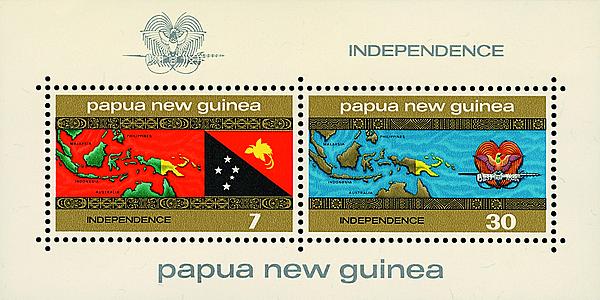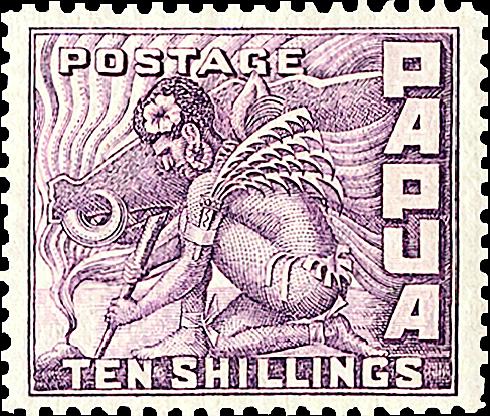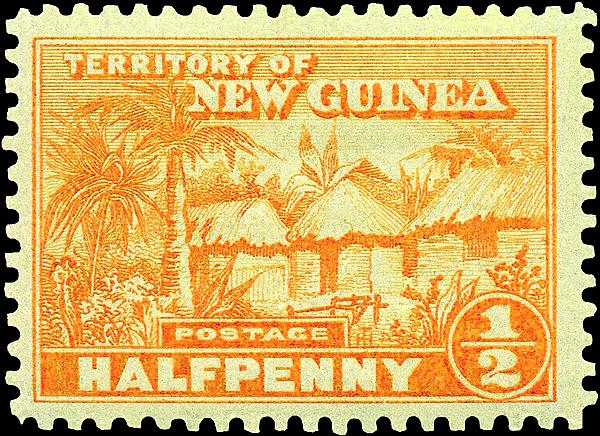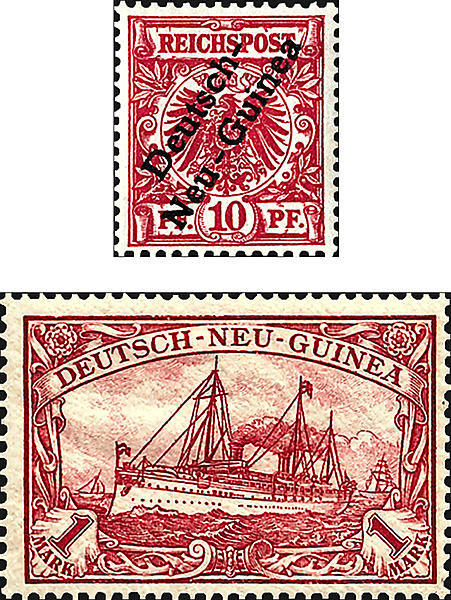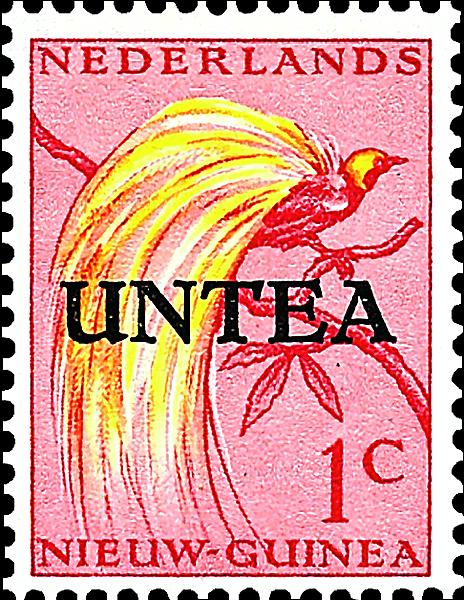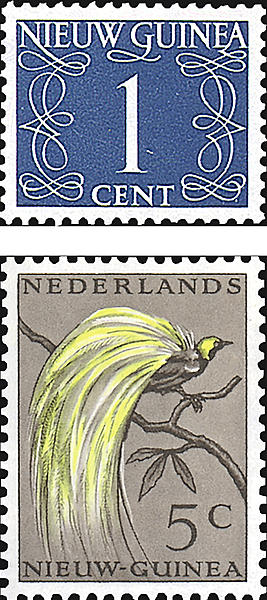World Stamps
The story of New Guinea’s evolution told through its stamps
New Guinea is the world’s second largest island, a little more than one-third as large as the world’s largest island, Greenland.
Located in the southwest Pacific Ocean, New Guinea is roughly 100 miles north of Cape York, Queensland, Australia.
New Guinea’s primary landmass is surrounded by smaller islands, most of which are also considered a part of New Guinea.
In the 19th century, a number of nations showed an interest in New Guinea. The Dutch came first in 1828. Great Britain raised the Union Jack at Port Moresby, New Guinea, on April 4, 1883. Germany was next, establishing trade on Neu Lauenburg Island, one of the outlying Bismarck Archipelago islands of New Guinea.
All of these European nations established postal systems and, not surprisingly, issued stamps to reinforce their presence in New Guinea.
Largely because of a strong presence by the Dutch East India Company (Vereenigde Oostindische Compagnie), most of what is now Indonesia and the western part of New Guinea came under the control of the Netherlands and was known as the Netherlands Indies, which became independent Indonesia (without west New Guinea) in 1949.
Netherlands New Guinea got its own stamps in 1950. Those initial stamps (Scott 1-21) were modeled after Netherlands definitive stamps issued in the 1940s.
In 1954, a subject that was uniquely New Guinean appeared on a 5¢ stamp: a beautiful bird of paradise (Scott 23).
Netherlands New Guinea stamps were not issued for long. There was great unrest and revolution in Indonesia and, by extension, in Netherlands New Guinea. The United Nations became involved, and the administration of West New Guinea (West Irian) was given to the United Nations Temporary Executive Authority (UNTEA).
Netherlands New Guinea stamps were overprinted UNTEA in 1962 (Indonesia — West Irian Scott 1a-19a).
UNTEA transferred administrative control of West New Guinea to Indonesia on May 1, 1963. Indonesian stamps overprinted “IRIAN BARAT” (Indonesia — West Irian Scott 20-33) and a stamp commemorating the liberation of West New Guinea (Scott 34-35) were issued that day.
In 1969, it officially became a province of Indonesia named Irian Jaya, which currently is broken into two Indonesian provinces and renamed West Papua and Papua, respectively.
British New Guinea and German New Guinea are about equally as complex as Netherlands New Guinea.
In 1885, the eastern half of New Guinea that was not controlled by the Netherlands was divided between Great Britain (and later, Australia) and Germany, with German New Guinea in the northern quadrant and British New Guinea in the south.
Beginning that year, stamps from the British colony of Queensland in northeastern Australia were used in British New Guinea.
Beautiful bicolor stamps inscribed “British New Guinea” were issued in 1901 (Papua New Guinea Scott 1-8). The stamps featured a boat called a lakatoi made by the indigenous people of New Guinea.
In 1906, British New Guinea’s administration was taken over by the government of the newly federated Commonwealth of Australia. British New Guinea was renamed Papua, and the Lakatoi stamps were overprinted “Papua” (Scott 11-26).
The Lakatoi stamps are still popular with collectors seeking a challenging specialty.
Next up were Lakatoi stamps with the name “Papua” inscribed on the stamp in the banner above the boat (Scott 28-73).
The Lakatoi stamps end in 1932 following a number of surcharges on the Papua-inscribed stamps (Scott 74-91) and two more Lakatoi stamps without surcharges (92-93).
A thorough study of Lakatoi stamps would involve paper types, assorted watermarks, different gauges of perforations, and printing varieties. It is quite the paper chase.
North of British New Guinea was German New Guinea. Germany overprinted Germany stamps with “Deutsch-Neu-Guinea” in 1897 (German New Guinea Scott 1-6). These stamps were in use until 1901, when German colonial Hohenzollern Yacht stamps replaced the overprinted issues (7-19).
During World War I, Australia was successful in capturing and occupying Kaiser-Wilhelmsland and several German-held islands nearby, including New Britain, which was a part of German New Guinea.
At first, German New Guinea stamps were overprinted “G.R.I.” for George Rex Imperator in 1914 and 1915 (New Britain Scott 1-42). Many varieties of these surcharges exist, and likewise, there are many forgeries.
When German stamps ran out, German New Guinea registration labels were surcharged from various towns (New Britain Scott 43-50).
Lastly, Australian Kangaroo and Map stamps and King George V stamps were pressed into service and overprinted “N.W. Pacific Islands.” These stamps were in use in New Britain and Nauru from 1915 to 1923 (North West Pacific Islands Scott 1-49).
Germany lost all of its colonies after WWI, including German New Guinea.
The former German New Guinea became a League of Nations mandate territory called the Territory of New Guinea, administered by Australia until 1949.
Stamps were issued for the Territory of New Guinea beginning in 1925.
The first design shows native huts. The bird of paradise reappears on the next issue, in 1931.
An attractive issue of stamps inscribed “Papua” for the region formerly known as British New Guinea was issued in 1932. Its Art Deco elements are eye-catching in every way (Papua Scott 94-109).
World War II brought intense fighting to New Guinea. Although much mail was sent from military personnel, no stamps were issued during the 1942-45 time period. In the post-WWII period through 1952, Australian stamps were used in Papua.
The Territory of New Guinea (formerly German New Guinea) and Papua (formerly British New Guinea) became the Territory of Papua and New Guinea in 1949.
In October 1952, a new series of stamps were released for the territory of Papua and New Guinea (Scott 122-136).
In September 1975, Papua New Guinea became an independent nation. A pair of stamps was issued to celebrate independence (Scott 423-424), and they were also issued together on a souvenir sheet of two (424a).
Telling the story of New Guinea’s stamp history is complex but nevertheless interesting. The best way to start a New Guinea collection is to acquire at least one stamp for each of the colonial periods and work your way forward to the present day.
MORE RELATED ARTICLES
Headlines
-
Postal Updates
Oct 7, 2024, 5 PMUSPS plans to raise postal rates five times in next three years
-
US Stamps
Oct 7, 2024, 3 PMMcMurtrie dismissed as APS education director following Sept. 21 arrest
-
US Stamps
Oct 7, 2024, 12 PMVasiliauskas named president of Mystic Stamp Co.
-
US Stamps
Oct 6, 2024, 5 PMApgar souvenir card available
